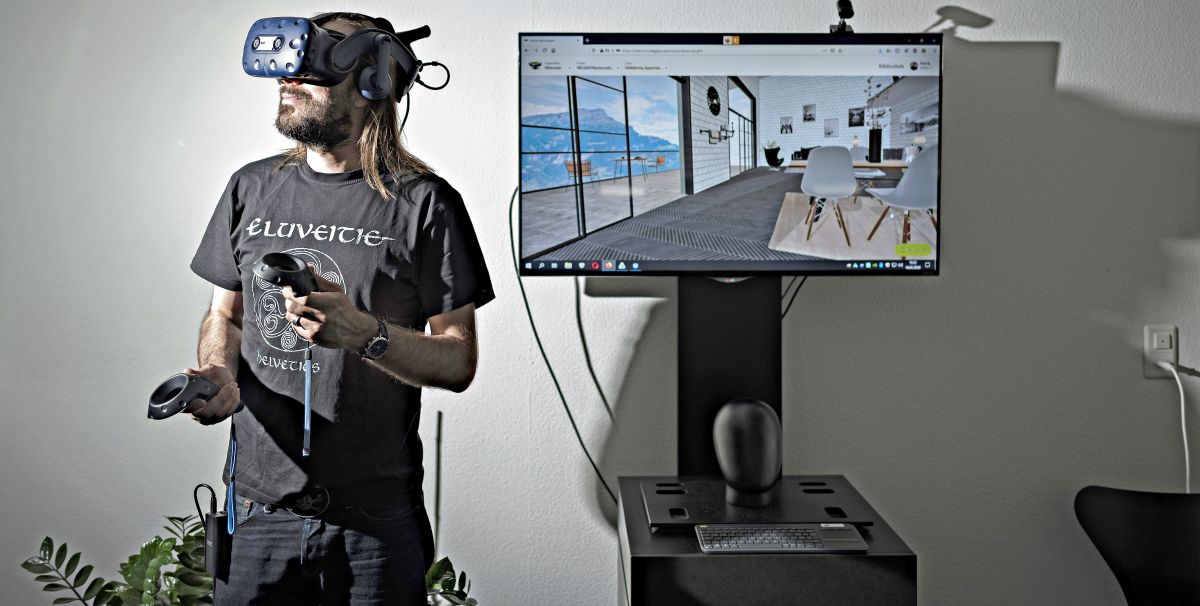We stand on the brink of a technological revolution that will fundamentally alter the way we live, work and relate to one another. In its scale, scope and complexity, the transformation will be unlike anything humankind has experienced before.” – Klaus Schwab
What does a future of immersive technology look like? It features a remote network of services around the world that pull groundbreaking immersive training programs, lesson management and collaborative learning potential into one location, accessible on any platform. However, it also features a new world of possibilities for industries choosing to embrace the potential of immersive technologies. From converting cost savings into revenue generation to the integration of a digital e-governance infrastructure, immersive training is the beginning – and the backbone – of the smart factory.
Introducing the Smart Factory
According to Deloitte Insights, the smart factory moves beyond automation to create a “fully connected and flexible system” where “a constant stream of data [is generated by] connected operations and production systems.” This means all data, from your learning record store to the technician’s notes on your manufactured equipment, is made available within a fully integrated system. But the collection of that data isn’t what makes the smart factory so clever. Smart factories describe the site of convergence between digital and physical industries – information technology and operations technology – that will result in the transformation of the traditional supply chain into “an interconnected, open system of supply operations — known as the digital supply network.” This integrated digital infrastructure will be able to “communicate, analyze, and use information to drive further intelligent action back in the physical world.” In other words, the technical foundations of the smart factory are the cyber-physical systems that communicate with each other to exchange data between the product and the production line in order to improve supply chain connectivity and create a better organized production environment.
In other words, intelligent manufacturing may not be as far away as we imagined. Many smart factories are already incorporating the necessary digital technologies into their core infrastructures, and they are being empowered by the pervasiveness of digital technologies.
The Digitally Pervasive World
The core components of digitalization are already in all of our pockets. Statistics show that approximately 3.5 billion people around the globe use smartphones. Further, close to half of private households have a computer, and in the U.S. alone, 66% of individuals own at least two digital devices while 36% own all three (smartphone, PC and tablet). The global pervasiveness of technology has created an opportunity for industries: The majority of employees already have access to the necessary technologies. Combined with web hosting, a few online servers and an integrated interface, industries suddenly have the capacity for a centralized digital system that is accessible by any device, over any network. It’s the perfect recipe for a high-tech overhaul with unlimited scalability potential, and the foundation starts with training.
Digital Technologies and Modernized Training
Training represents a critical starting point for the digital revolution, because the increased digitalization of industries causes a direct shift in the skill requirements needed to support the future workplace. In fact, a report published by the World Economic Forum estimates that close to 35% of the top skills required for all jobs will change by the end of 2020. Supporting this shift in skill demand with the appropriate training is critical, but industries are already spending an estimated $362.2 billion on corporate training initiatives worldwide. In order to accommodate the added training demands of adapting current workers to their new skill requirements, organizations need a means of optimizing the entire training process to make it more affordable, accessible and effective. They can accommodate this need by incorporating smart technologies into their training departments.
An investment in digitalized training using immersive technologies supports the transition to student-centric training. This shift provides multitiered benefits for industries looking to optimize their approach to training. In the very near future, quality training and education will be readily available on any device, over any network. This will allow training to be made remotely accessible, increase the number of learners able to access training in any given session and minimize the cost and impact of distance. Further, digitalized learning increases learners’ ability to review and practice lesson material, especially when they can access it from their own devices outside of working hours. In addition to the disruption of the geographic and socioeconomic barriers of traditional training, digitalized learning also enables high-quality, remotely accessible training to be delivered in a dynamic and engaging approach capable of advancing learning retention, knowledge transfer and learner potential.
According to Touchstone Research, immersive training technologies disrupt a learning problem that has pervaded training institutions for centuries. In 1885, Herman Ebbinghaus hypothesized a decrease in the brain’s ability to retain memory over time – otherwise known as the forgetting curve. His argument states that the length of time during which something can be remembered is dependent upon the strength of that memory. In other words, in order for something to be remembered long term, it needs to be learned in an impactful way. Following traditional methods, Ebbinghaus’s calculation shows that a person will forget 90% of training course content after only a month. The challenge becomes more paramount in the workplace, where employees are only able to dedicate 1% of their workload to learning and development.
Immersive training disrupts the traditional training methodology by leveraging a simulated and interactive environment to create a stronger memory of each lesson. Virtual learning environments activate different learning approaches, combining sensory perception and muscle memory in an experiential learning environment that demonstrates realistic scenarios. Humans, by nature, are used to learning by doing and by perceiving the critical impacts of their actions. Immersive technology enables learners to enter a simulation of any training environment and learn and make mistakes safely. Learners are supported by responsive functionality, the true-to-life physics of the simulation and added educational content, resulting in increased engagement and a stronger training memory.
Smart Training, Smarter Datasets
Digitalized immersive training is able to optimize training efficiency – with improved knowledge retention reducing cost by requiring fewer training sessions. However, that digitalized training program is providing a further benefit. Through its user tracking, data collection and data analysis capabilities, it is working to secure an improved dataset that can prepare its digital infrastructure for the potential of still-developing technologies, like artificial intelligence. By using immersive technologies, organizations gradually build a repository of easily dispersed immersive training content to use in training new technicians and experts. Organizations planning for the future are ensuring longevity by investing in immersive training, then leveraging the resulting digital capabilities to form a backbone for sustainable development. The strategy is already seeing some success. According to a Capgemini report, 82% of companies implementing virtual reality (VR) or augmented reality (AR) have found that it either matches or exceeds their expectations.
The Immersive Investment
One of the strongest drivers in the adoption of immersive training is the demonstrated return on investment (ROI). Boeing declared their use of AR for technicians has increased productivity by 40% and reduced wiring production time by 25%. Intel, a multinational tech company, created training for their electrical safety recertification. Their final assessment calculated the five-year ROI of VR for this one training alone could be as high as 300%. Not only can organizations benefit from cost savings by investing in immersive training programs but also by using their immersive training as a revenue driver. Once created, immersive training lessons can be sold to end clients, and virtual training environments can be used to improve remote support engagement or as training for affiliate operations. Organizations are no longer researching the potential of the technology; they are strategizing how to implement it and are heavily investing in its potential for future revenue growth.
From Smart Factories Come Smart Cities
Digitalized technologies have undeniably created a paradigm shift that is taking hold of training organizations worldwide. It’s no coincidence that the manufacturing industry is at the leading edge of this digital frontier. Historically, the manufacturing industry has typically instigated revolution. By definition, an industrial revolution describes the appearance of “new technologies and novel ways of perceiving the world [that] trigger a profound change in economic and social structures.” Soon, just as learners can access immersive training from any device and over any network, clients will be able to access product data, procedural information and direct organizational support with their fingertips. All data, from point of creation to point of sale, will be fed back into an integrated digital infrastructure. However, the important thing to remember about industrial revolutions is that they don’t limit themselves to the industries they take their shape from. The changes taking place within smart factories are going to lead the rest of the world to sociopolitical-landscaped and economic infrastructures.
From the steam power revolution to the mass production revolution, the technologies that power industrial innovation have a dynamic impact on the world. Immersive technologies have created an opportunity to optimize education and training, and in the process, they have begun to sculpt the core infrastructure of the smart factory. A future of smart cities is not far behind.
Quelle:
https://trainingindustry.com/magazine/may-jun-2020/the-backbone-of-the-smart-factory-a-network-of-immersive-training/




